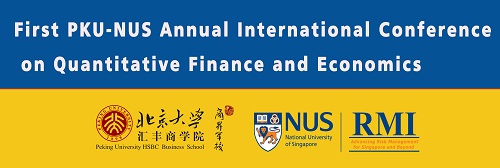Prof.Christopher Balding : Is Chinese Travel and Tourism Up Strongly? Absolutely Not

The latest sector that perma-pandas are clinging to as proof of a 7% GDP growth economy is travel and tourism. Fresh upon the heels of official data showing Golden Week outbound foreign travel was up 36.6% from last year and reports of Chinese tourists “buying up everything”, perma-pandas took this as evidence that the Chinese economy was strong signaling strength in services and consumption. Slowing entry numbers into Hong Kong and Macau however, was evidence of the anti-corruption crack down and that Chinese are turned off by Hong Kong ideas of democracy.
The problem with this simplistic analysis is that it relies on incredibly narrow data points to read into an economy of 1.3 billion people. In statistics parlance, these are all incredibly biased samples for different reasons on very narrow sub-groups. As I have noted before, China is not nearly data poor as is widely believed though not as data rich as other places. However, we have much better and wider data on the state of Chinese tourism than such simplistic narrow measures.
Let’s begin by trying to provide some context around some of the more attention grabbing travel headlines. First, air travel only accounts for about 2% of all passenger travel in China. Consequently, extrapolating from such a narrow sample to project upon the all of the travel industry or even Chinese economy is problematic. Given a recent statistical change in data compilation, which I will explore later, it is quite possible that air travel accounts for an even significantly lower percentage than 2%. As a point of comparison, waterway travel in China accounts for about 1.4% of travel. It seems incongruous to focus so heavily on air travel and omit virtually any mention of waterway travel.
Second, not only is air travel a tiny portion of the over travel sector, international air travel is a tiny part of an even tinier part. International air travel comprises only about 10% of all air travel in China. In other words, international air travel is equal to 10% of a 2% percent market or roughly 0.2% of the entire Chinese passenger travel market. It seems rather problematic to project onto the entire Chinese economy based upon the consumption behavior of the truly 0.2%.
Third, according to broad passenger data, air and railway travel are up a healthy 12.3% and 7.1% respectively year to date. Even waterway passenger travel is up a more moderate 3.3%, which remember is only a little smaller than air travel by passenger number. However, while these are healthy growth numbers, these segments of passenger travel only make up 16.7% in all of China. Highway passenger traffic which comprises 83.3% of all passenger travel in China is down 0.6% year to date. Consequently, all passenger traffic in China is up only 0.5% year to date. In other words, these giddy proclamations citing international travel data relying on the top 0.2% of the population are missing the story of what is happening to Chinese travel.
Before proceeding, I want to note a specific issue about passenger travel data. There is a data break in official highway passenger travel between calendar year 2013 and 2014. Consequently, we can only compare backwards one year. In the data break, highway passenger traffic was reduced by about 50%. I have been unable to find any official document that addresses why this change took place. I have been told it has to do with redefinition of highway traffic based upon the type and size of the road, though as noted I have been unable to confirm this officially. While this prevents us from comparing data before 2014, we can compare for the last year and incorporate other data sources to provide a fuller picture.
Given the 2013 to 2014 data break and other reasons, I can understand skepticism about how accurate or reliable highway passenger data is informing us about the state of the Chinese travel industry. At this point, let’s begin to incorporate other data to provide a fuller picture. One area to look at is listed company revenue. However, it is very important to provide some context. First, the companies are not representative of passenger volume. For instance, air transport revenue is approximately four times the size of road revenue. Second, these industries do not provide break down by freight and passenger revenue so it is again not entirely representative for our purposes. Third, while we should not entirely accept it, we can use it understanding its limitations.
Air, water, highway, and rail transport operating revenue registered 4.1%, -8.4%, 8.1%, and 8.0% growth in H1 2015 from H1 2014. It is worth noting that the road and rail the two largest segment registered solid growth though due to which companies are listed, their total revenue was only 21% of these specific transport industries. However, totaling across these specific transport sectors, operating revenue increased only 0.8%. While the limitations need to be recognized, this again fails to paint a picture of robust growth.
There are other ways to study the travel sector and that is hotel and restaurant data. If passengers are travelling, they will need places to stay and things to eat. If the highway passenger data is inaccurate in someway, we would expect this to show up in hotel and restaurant data.
Unfortunately, hotel and restaurant data is even worse than travel data. Beginning with listed firms, YTD YOY hotel and restaurant operating revenue is down 0.3% and 16.0% respectively. Operating profit for each is down 4.4% and 138.6% respectively.
However, it is possible that like listed transport financials, this presents an incomplete picture. However, broader data largely supports this picture of hotels and restaurants. Per room revenue across all provinces increased only 1.0% through 1H 2015, total operating revenue for hotels across all provinces declined 0.4% through the same time period, and room rates increased only 0.2%. If we look broadly at the restaurant sector, there is a further lack of evidence of strong travel and tourism. According to UnionPay Advisors, restaurant spending has dropped 12%. This is very much in line with the financials of the listed firms.
If travelling and tourism is booming, it certainly is not showing up in broad measures of passenger, hotel, or restaurant data. I include hotel and restaurant data because if people are going to travel, they have to have places to stay and eat. It is totally inconsistent to believe that broader passenger volume is up strongly while hotel and restaurants are flat or down. In short, there is no evidence of strong growth anywhere in the hotel or restaurant sector if people are travelling.
There two final final but important aspects to note about all of this data and how to interpret it. First, it is not contradictory to believe the largest number of Chinese are not growing but that a small number continues to enjoy significant success and enjoy luxuries like international leisure travel. As has been noted in many places around the world during recessions or slowdowns, the wealthy or high skilled labor are not impacted nearly as badly as middle and lower class households. This would explain why broad passenger traffic is flat, domestic air travel is up 10.3%, and international air travel is 38.1%. These are different populations with different experiences through the slowdown. It appears that the slowdown is hitting the broad population reducing consumption of goods and services but as with other countries, many at the upper end of the income and wealth level are prospering.
Second, even air travel however is having to change its strategies to continue to boost numbers. While air passenger travel is up 12.3% YTD YOY, listed air transport operating revenue is only up 4.1%. If we focus on a specific airline, we see evidence of the relative decline in pricing power. Air China saw revenue per passenger kilometer decline 5.7% total and domestically by 6.7% (PDF). China Eastern saw even larger declines at 7.9% and 8.9% respectively (PDF). In other words, to induce additional passenger growth it cut prices by a relatively significant amount. This is simply not indicative of a robust travel market and strong passenger demand.
Just as the Beijing or Shenzhen home price is not representative of China, neither is focusing on air travel and specifically the international variety. The weight of evidence clearly demonstrates broad weakness in the travel, passenger transport, hotel, and restaurant sectors. Neither revenue nor output support the perma-panda belief in 7% growth.
By Christopher Balding
From Balding' s World
-
 PHBS Opening a Campus in UK: Se...
PHBS Opening a Campus in UK: Se...Feb 22 2017
-
 PHBSers: Wishing You a Better Year Ahead!
PHBSers: Wishing You a Better Year Ahead!Dec 30 2016
-
 PHBS Alumni on the 14th New Fortune Best Analyst List
PHBS Alumni on the 14th New Fortune Best Analyst ListDec 09 2016
-
International Student Profile: Kevin Kurnia
Time:Oct 12 2017
-
Professor He Fan: Is ChinaÔÇÖs Ec...
Time:Sep 28 2017
-
New Students on campusÔÇŽWhat would they like to say?
Time:Sep 18 2017










